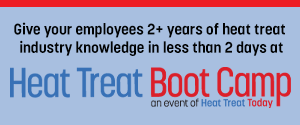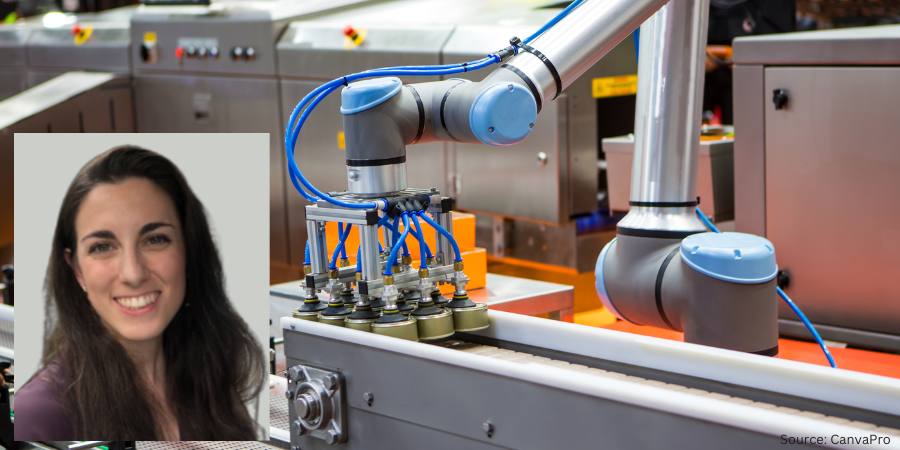Heat Treat Today publishes eight print magazines a year, and included in each is a letter from the editor, Bethany Leone. This letter first appeared in May 2024 Sustainability print edition.
Feel free to contact Bethany at bethany@heattreattoday.com if you have a question or comment.
In a 2022 episode of Heat Treat Radio, Justin Dzik, a business development manager at Fives North American Combustion, Inc., forecasted a shift in our industry: “If you go down far enough in the [EPA] scopes, obviously that includes processes for heat treatments of steel. Who knows how long that will take, but for sure, that is probably the future path in the next quarter century or so.” As Michael Mouilleseaux’s column on page 12 of this magazine demonstrates. [Read Michael’s column here. – Editor] Dzik’s prediction about the need for understanding environmental regulations shaping our future is not far off.
Later in 2022, I attended a technical talk on environmental regulations and how to calculate emissions in heat treat operations. Much of the talk was spent defining terms, which I was surprised by; where were all of the interesting graphs and action items? The presenter knew something that I did not: heat treat industry experts still needed to build a foundation of definitions to understand this topic, before making decisions.
Who Needs To Understand EPA Scopes?
Not everyone has studied environmental regulations in depth. Basically, if you aren’t the one responsible for tracking emissions and cutting emissions in your operations, you do not need to know these scopes. (If that’s you, you may stop reading and continue to the next column!)
However, if you either are (a) obligated to report GHGE (greenhouse gas emissions) at your site or are (b) responsible for cutting GHGE, or you want to have a stake in these conversations, this column is for you. Given that this whole magazine is about sustainable technologies, this is your “back pocket” introduction to the EPA’s GHGE scopes for heat treaters.
EPA Scopes Defined
These three EPA greenhouse gas emissions classifications were originally created as part of the agency’s efforts to trace their own environmental impact and set goals to reduce these emissions. For in-house heat treat operations, knowing what these “scopes” mean will help you identify what carbon cutting initiatives apply to you and what is under your control.
The scopes classify GHGEs that occur from the operations of a business or agency. Each define where the emissions are produced and who is responsible for producing them; together, this is a way to assess the business’s overall “environmental impact.”
3 Scopes
Scope 1 are the direct emissions that the company owns or can control; this is descriptive of all emissions that are the direct result of burning fossil fuel on-site, including emissions from transportation vehicles.
Scope 2 describes indirect emissions that are produced from generating electricity.
And Scope 3 describes indirect emissions created from a company’s value chain; that is, emissions produced when another entity created or delivered a product the company uses.
Application
Understanding what can and cannot be controlled helps frame strategic environmental targets. For instance, while scope 2 emissions are indirect, the source of your electricity (whether it involves GHGE or not) affects your carbon footprint. Since it falls outside the direct scope “1,” it will require more strategic thinking when considering any operational transitions that use electricity, like adding an induction hardening line.
The more indirect, often the more secondary effects there may be when pursuing environmental impact reducing changes. For example, promoting remote work to reduce scope 3 emissions related to employee transportation is often desirable from an employee satisfaction standpoint. However, this introduces new variables: Do employees commute to coworking spaces? What is the GHGE impact of their work-from-home setups? Are there social well-being consequences of this shift, negative or positive?
To use these scopes to define environmental stewardship goals, we also need to ask the right questions about our context:
- What areas need upgrades?
- What are the economic and social outcomes of these actions?
- Do we need to reassess technologies that our operations should invest in?
Sustainability Heat Treat Resources
That’s the “back-pocket” summary. There are more robust resources on epa.gov and plenty of videos on YouTube when you search “epa scopes about.” Here are additional heat treat-specific resources:
- On December 6, 2023, Gasbarre’s Bryan Stern presented a webinar “Understanding Carbon Footprint and Costs of Atmosphere and Vacuum Processing.”
- Locate IHEA’s Sustainability Terms & Definitions on their website, loaded with applicable notes on these terms and more. https://www.ihea.org/page/SustainabilityTerms.
- Attend FNA 2024. Technical Session topics will be released this month. https://www.furnacesnorthamerica.com/sessions
- Search “scope” on www.heattreattoday.com to read these articles:
- “Sustainability Insights: Vacuum Heat Treating in a Carbon-Conscious Market”
- “Sustainability Insights: How Can We Work To Get the Carbon Out of Heating? Part 1”
Contact Bethany at bethany@heattreattoday.com.
Find Heat Treating Products And Services When You Search On Heat Treat Buyers Guide.Com







